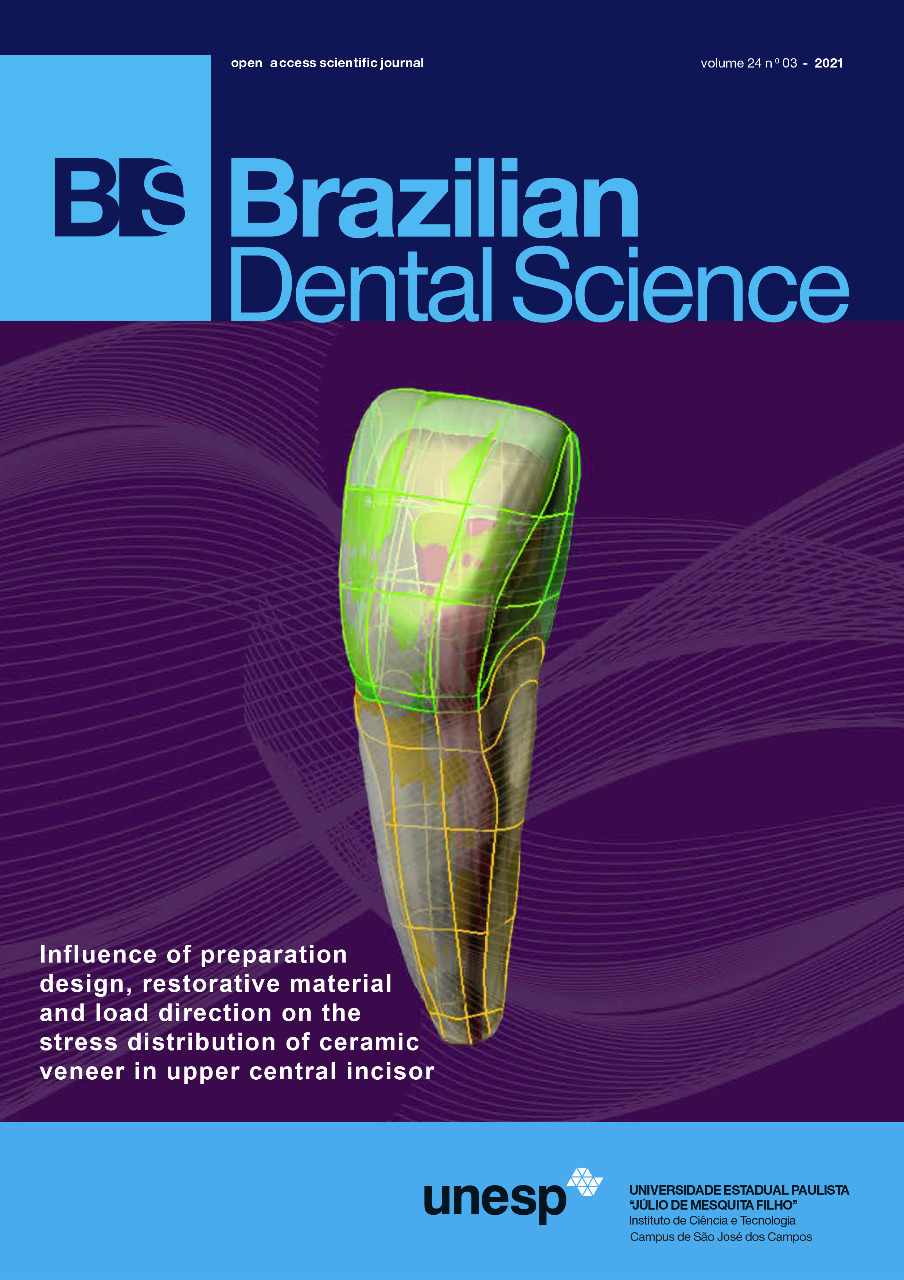The The ability of platelet-rich plasma to regenerate a non-vital immature permanent teeth
DOI:
https://doi.org/10.14295/bds.2021.v24i3.2576Resumo
Objectives: To test the ability of platelet-rich plasma clinically and radiologically for pulp regeneration of immature teeth with apical periodontitis. Material and Methods: An experimental study was conducted From (March/2018-July/2020) 12 upper central immature incisors with acute apical periodontitis and necrotic pulp from six patients receiving regenerative endodontic treatment using concentrated platelets rich plasma were performed by the same endodontist at Mediclinic Middle East Hospitals. Informed consent, including explanation of risks and alternative treatments or no treatment were prepared and filled by the patient parents. The therapeutic protocol was involved accessing the pulp chamber; irrigation copiously with sodium hypochlorite; applying calcium hydroxide as intracanal medicament and a provisionally sealing it after 4 weeks. The canal was cleaned, dried and injected with concentrated platelets rich plasma which serve as a scaffold for pulp regeneration. MTA was used to seal the chamber before final filling with composite. Evaluations: All teeth were monitored clinically (mobility, palpation, percussion, and sensitivity cold test) and radiographically. Results: Twenty months follow-up all teeth showed resolution of periapical radiolucencies, continued root development with positive response to sensitivity cold test and no discoloration. Conclusion: The results of this study confirmed the previous finding that pulp regeneration can be gained by using cPRP successfully
Keywords
Immature teeth; Necrosis; cPRP; Regeneration.
Downloads
Downloads
Publicado
Como Citar
Edição
Seção
Licença
TRANSFERÊNCIA DE DIREITOS AUTORAIS E DECLARAÇÃO DE RESPONSABILIDADE
Toda a propriedade de direitos autorais do artigo "____________________________________________________________________" é transferido do autor(es) para a CIÊNCIA ODONTOLÓGICA BRASILEIRA, no caso do trabalho ser publicado. O artigo não foi publicado em outro lugar e não foi submetido simultaneamente para publicação em outra revista.
Vimos por meio deste, atestar que trabalho é original e não apresenta dados manipulados, fraude ou plágio. Fizemos contribuição científica significativa para o estudo e estamos cientes dos dados apresentados e de acordo com a versão final do artigo. Assumimos total responsabilidade pelos aspectos éticos do estudo.
Este texto deve ser impresso e assinado por todos os autores. A versão digitalizada deverá ser apresentada como arquivo suplementar durante o processo de submissão.




























